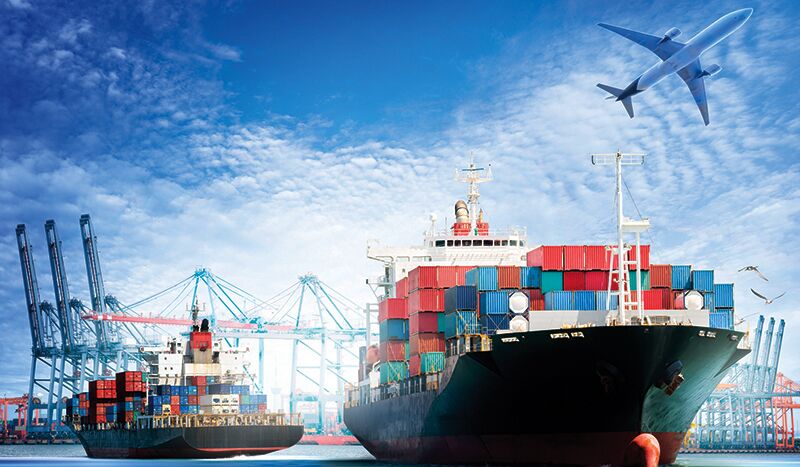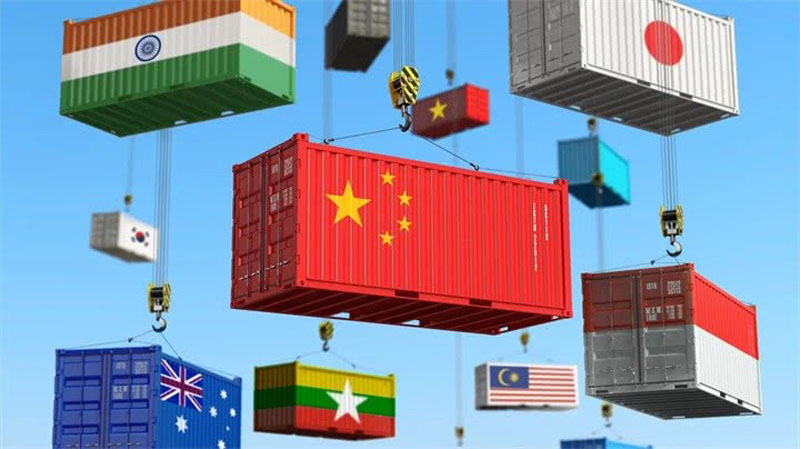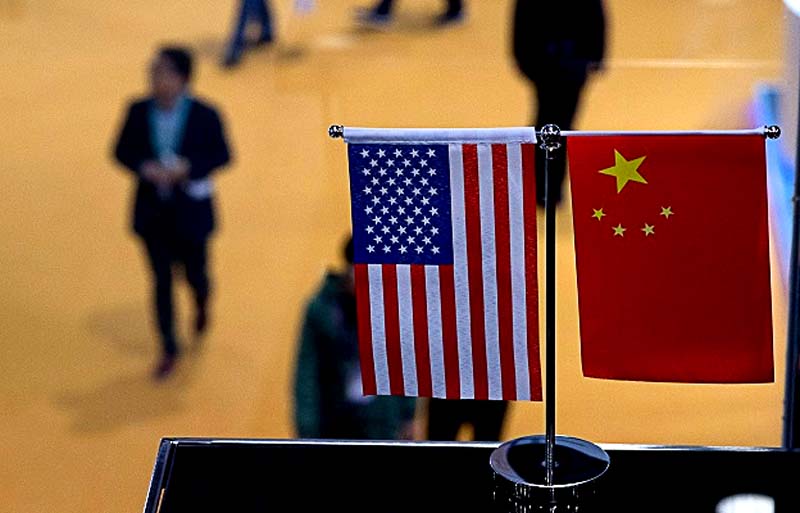Exports are surging

Industrial output rose 7% y/y in November, reaching its fastest growth rate since April. Investment rose 2.6% y/y, and was up 0.8 pps from October.
Consumption was the worst-hit macro variable of the pandemic. But retail sales of consumer goods recovered further, rising 5% y/y, up 0.7 pps from October. Its real growth rate was 6.2% y/y, and was even higher than in November 2019.
CPI fell -0.5% y/y in November, turning negative for the first time, hit by a fall in pork prices. The ex-factory price index of industrial output fell -1.5% y/y, and PPI fell -1.6% y/y, up 0.6 and 0.8 pps respectively from October.
Most financial and monetary indicators halted their rising trends, except for M1. As of the end of November, M1 was up 10% y/y, and up 0.9 pps from October, reaching its highest growth rate since February 2018.
Exports are surging, and rose 14.9% y/y, and 4.7 pps from Q3. Exports to the United States and Canada were particularly strong, rising 38.6% and 52.4% y/y, up 19.4 pps and 23.2 pps from Q3. Imports fell -0.8% y/y, turning negative again, although by a small magnitude.
China’s exports in November experienced their strongest surge since early 2018: China shipped $268 billion in goods, more than 21% more than in the same month last year, pushing its trade surplus to a monthly record high of $75.4 billion. China’s global export share increased to over 13% in the second and third quarters from 11% last year, the highest for any quarter. All this happened despite a strong RMB. This can be mostly attributed to China’s good pandemic control, which allowed production to proceed uninterrupted, in comparison to other major economies.
With trade uncertainty eased, 6% growth target can be achieved
The United States and China on January 16th struck a "phase one" trade deal, at least easing uncertainty over the future of U.S.-China trade relations. Exports raised 5% y/y in 2019, down 2.8 pps from 2018, while imports raised 1.2% y/y, down 11.6 pps.
GDP raised 6.1% y/y last year, down 0.5 pps from 2018. Industrial output raised 5.7% y/y, down 0.5 pps, while investment raised 5.4% y/y, down 0.5 pps.
Fiscal revenue was up 3.8% y/y in January-November 2019, down 2.7 pps from the same period in 2018. Fiscal expenditure was up 7.7% y/y, up 0.9 pps. So the fiscal deficit is rapidly expanding, constraining government’s future fiscal expansion.
CPI was up 4.5% y/y in December, and up 2.6 pps from December 2018. Producer prices have been growing more slowly in 2019. PPI in December fell -1.3% y/y. PPI has been on its steepest decline since July 2016. The official PMI indicated contraction for a sixth straight month. Both reflect weak domestic demand due to growth slowdown. In response, for the first time since 2016, China on November 20th cut the interest rate on its one-year MLF loans by 5 basis points.
The annual Central Economic Work Conference (CEWC) held by top leaders December 10th-12th emphasized “stabilities.” We believe that “around 6%” is the likeliest 2020 growth target. The conference stated that the direction of housing policy in 2020 would be stable. We expect the stabilization policy to ease concerns of potential risks that real estate poses to the macroeconomy. Our confidence is based on China’s strong fundamentals, and strict real estate purchase restrictions.
On January 14th, the U.S. Treasury department dropped China’s designation as a “currency manipulator.” Onshore RMB instantly jumped by 0.2%, its highest level since July. Non-banks also showed net FX inflows of around $6 billion in December. We expect all of these indicators to improve significantly in 2020. Our faith is built upon China’s still-strong fundamentals, relatively peaceful U.S.-China relations in a U.S. election year, and China’s high capital return.
RCEP Can Give Boost to International Trade

India’s sudden withdrawal has hit negotiations involving 16 countries of the Regional Comprehensive Economic Partnership treaty, which is expected to conclude this year. The RCEP is a proposed free trade agreement between the countries of the Association of Southeast Asian Nations, and six states with which ASEAN has FTAs.
China needs to remain open towel coming India to join the RCEP whenever it is ready, deepen reform and opening-up to benefit countries entering the Chinese market, and mediate among different countries to ease trade frictions to contribute to the conclusion of RCEP negotiations, which can inject fresh impetus to global trade.
With a population of about 3.5 billion, this trading bloc has a total gross domestic product of more than $21 trillion, accounting for more than 30 percent of global trade. If the RCEP is finalized, it will be the world’s largest regional FTA.
The RCEP is more accessible to developing nations. Its framework complements the World Trade Organization by covering traditional issues such as goods trade, dispute settlement and service trade as well as new ones, including investment intellectual property, digital trade, and finance and telecommunication.
It plans to cut restrictions and discriminatory measures especially in the field of service trade. The RCEP can lay the foundation for developing countries participating in the treaty to get involved in higher FTA levels in the future, which is significant for promoting free trade between member countries in the era of globalization.
Since WTO reforms have not yet been launched, the RCEP will offer great opportunities for global trade, especially for China. Due to factors such as the unilateralism of some major countries, the number of permanent WTO judges has come down from seven to three, with the tenure of one of them concluding by the end of this year.
Participation in the RCEP will be an important approach for China to cope with Sino-US trade frictions and stabilize its foreign trade growth in the short term. In the long term, it is expected to promote China’s high-level opening-up and further its participation in regional integration.
China will further expand its economic and trade partners among the RCEP member countries and make greater contributions for maintaining the prosperity of the Asia-Pacific region.
It will also share its experiences and help RCEP member countries enhance confidence in free trade and combine the RCEP framework with the Belt and Road Initiative to produce joint results.
At present, all parties have reached consensus on more than 90 percent of the agreement text. However, the China-United States and Japan-Republic of Korea trade frictions, and India’s withdrawal, continue to pose challenges.
India has concerns about the potential negative impact of imports and lacks confidence in the competitiveness of the domestic industry. It has filed many anti-dumping cases against China, and has established a complicated non-tariff system to protect the domestic market.
In this regard, China first needs to promote to the member countries to adopt more proactive and pragmatic strategies toward the conclusion of negotiations while respecting ASEAN’s dominant role.
China needs to uphold the principle that the 15 RCEP countries can go ahead with the agreement that is open to India, which reflects China’s openness toward foreign cooperation as well as its determination to adhere to multilateralism and trade liberalization.
Second, some Southeast Asian countries are concerned that domestic markets may bear the brunt of China’s exports once the RCEP treaty is concluded. China needs to further reform and open up, show the huge potential of the Chinese market to enterprises and investors of other countries participating in the RCEP, and encourage countries to invest in China and facilitate RCEP negotiations.
The second China International Import Expo recently held in Shanghai allowed foreign enterprises to see the great returns of tapping into the Chinese market and demonstrated China’s confidence as the world’s largest market. The Foreign Investment Law will come into effect in 2020, when foreign investment and business activities in China will be more secure.
Third, China needs to further play its role as a mediator. Since Japan- ROK economic and trade frictions are showing no signs of easing in the short term, China needs to respect the dominant role of ASEAN while continuing to mediate between countries as a major power and promoting countries participating in RCEP negotiations to adopt more proactive pragmatic strategies, which can turn risks into opportunities, and lay the foundation for future negotiations for the China-Japan- ROK Free Trade Zone and the China-India trade agreement.
In the era of globalization, RCEP member countries need to remain open and inclusive, participate in negotiations proactively and promote regional integration to better cope with challenges caused by anti-globalization and trade protectionism.
As the world’s largest regional agreement, the RCEP will serve as a multilateral cooperation platform for member countries, provide a new approach for countries to address problems, advance cooperation in the Asia-Pacific region and give new impetus to global trade.
New deregulation measures expected to boost cross-border trade and investment
The economy is showing various signs of weakening. In Q3, GDP was up 6% y/y, down 0.2 pps from Q2, and down 0.5 pps from Q3, 2018. Industrial output was up 5% y/y, down 1 pp from Q3, 2018. Investment was up 4.7% y/y, down 0.8 pps from Q2.
Retail sales of social consumption goods were up 7.6% y/y, down 1 pp from Q2, and down 1.4 pps from Q3, 2018. Sales’ real growth rate was 5.7% y/y, down 0.8 pps from both Q2 and Q3, 2018. Imports fell 2.9% y/y, down 5.2 pps from Q2, and down 21.9 pps from Q3, 2018. Exports rose 3.9% y/y, down 1.8 pps and 6.4 pps from Q2 and Q3, 2018 respectively. The trade declines were mainly caused by the weakening global economy, and trade war with the United States.
In Q3, CPI rose 2.9% y/y, up 1.1 pps from Q1, continuing its appreciation trend. Producer prices turned to negative growth. The ex-factory price index of industrial goods fell 0.8% y/y, and PPI fell 1.2% y/y, both down 1.3 pps from Q2. Higher CPI raised policymakers’ concern, leading to tightening monetary policy. At the end of September, M2 was up 8.4% y/y, the same as in June. M1 was up 3.4% y/y, down 1 pps from the end of June.
On October 23,the State Council announced 12 detailed measures to better facilitate cross-border trade and investment, including by improving foreign exchange management, and by further streamlining regulatory requirements, with a view to using a more enabling business environment to attract foreign investors. We believe these detailed plans complement the central leadership’s promise early this year of keeping China more open, in contrast to the rise of protectionism in some other countries. The plans are very detailed, and are expected to have an immediate positive impact on trade and foreign investment, and therefore on aggregate economic growth.










